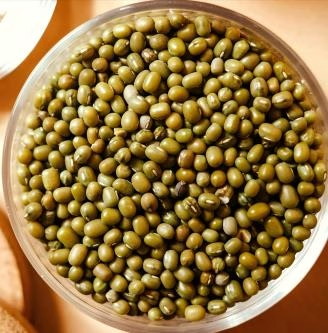Mung beans, long known in the Compendium of Materia Medica for their sweet and cold, non-toxic properties, can reduce swelling, relieve gas, suppress heat and detoxify. They can replenish vital energy, harmonize the five internal organs, and calm the mind. These words chronicle the therapeutic benefits of the small bean.
How should mung beans and mung bean soup be prepared? What precautions should be taken when cooking?
Mung Bean Benefits: Heat-Removing, Summer-Burning, and Detoxifying
The therapeutic benefits of mung beans are numerous, primarily for removing dryness and heat. Mung beans are a cooling ingredient with a sweet taste, known for their ability to remove heat, dampness, promote diuresis, aid in detoxification, harmonize the stomach, and moisturize the skin.
Mung beans are particularly effective for relieving heat and thirst in hot weather, helping to eliminate dampness and heat from the body.
Not everyone can eat mung beans, right? Note for Certain Groups
Mung beans are a whole grain, rich in protein, vitamins A, B, C, and E, and minerals like potassium, phosphorus, magnesium, and calcium. Their high protein content, even surpassing some meats, makes them a suitable supplement for vegetarians and those with a general diet. Mung beans are high in starch, which can make them feel full, but consuming them in large quantities can cause digestive issues and lead to bloating.
Mung beans are ideal for spring and summer consumption, particularly for their heat-clearing properties. However, due to their cooling properties, moderate consumption is recommended for most people. However, certain groups may have contraindications, especially those with a cold constitution or digestive issues. Excessive consumption can lead to digestive problems and diarrhea.
Mung beans are high in potassium, making them less suitable for those with kidney disease.
How should they be prepared for daily health? A cup of mung bean water and a bowl of mung bean porridge
Since mung beans help to reduce internal heat, they are two suitable nourishing options. If you find plain water bland and tasteless, you can use mung beans to make mung bean water during hot weather. The method of “boiling and then simmering” is the best way to preserve the skins of the mung beans.
Only drink the mung bean water in moderation on hot days to help dissipate heat, and use the remaining mung beans to make porridge.
When you experience heatiness and a lack of appetite, or feel down after a few drinks, making a refreshing mung bean porridge can help soothe your stomach, detoxify, and eliminate heat.
Instead of using standard white rice, this time, I’ve chosen brown rice, barley, oats, and other ingredients to create this multi-grain mung bean porridge. This porridge combines all the grains in one pot, making it nutritious. Seasoned with a small amount of brown sugar and rock sugar, it’s delicious and appetizing when served warm.
On hot days, chilled mung bean soup soothes the heat. The soup is made by soaking whole mung beans for about two hours, then boiling them and simmering them until cooked. The mung bean garlic dessert uses the peeled mung bean kernels.
The steamed mung bean kernels are then simmered with brown sugar, creating a thick, thick sauce. This traditional sweet snack, refreshing and cooling, remains an unforgettable culinary memory for many during sweltering weather.


Leave a Reply